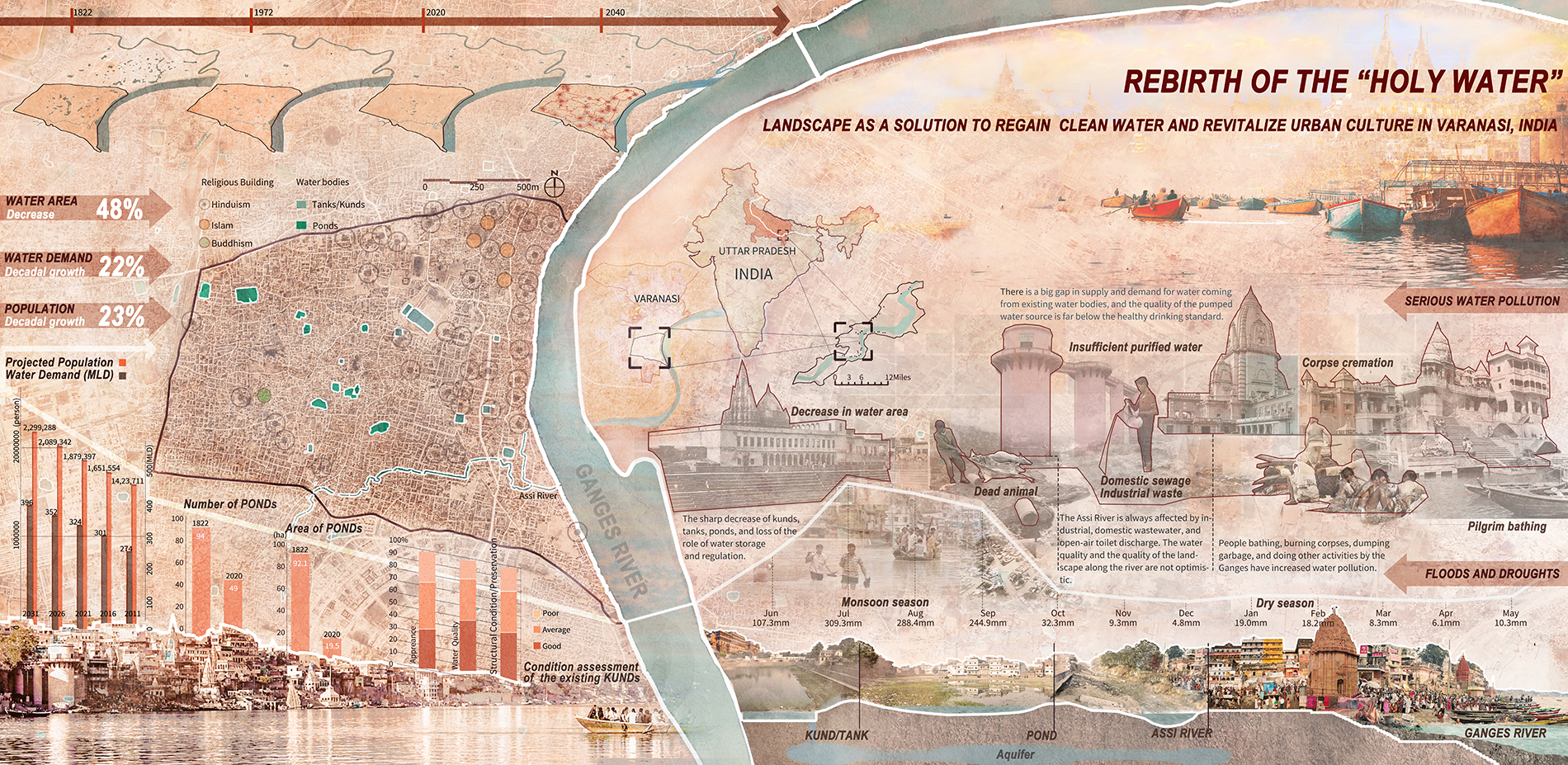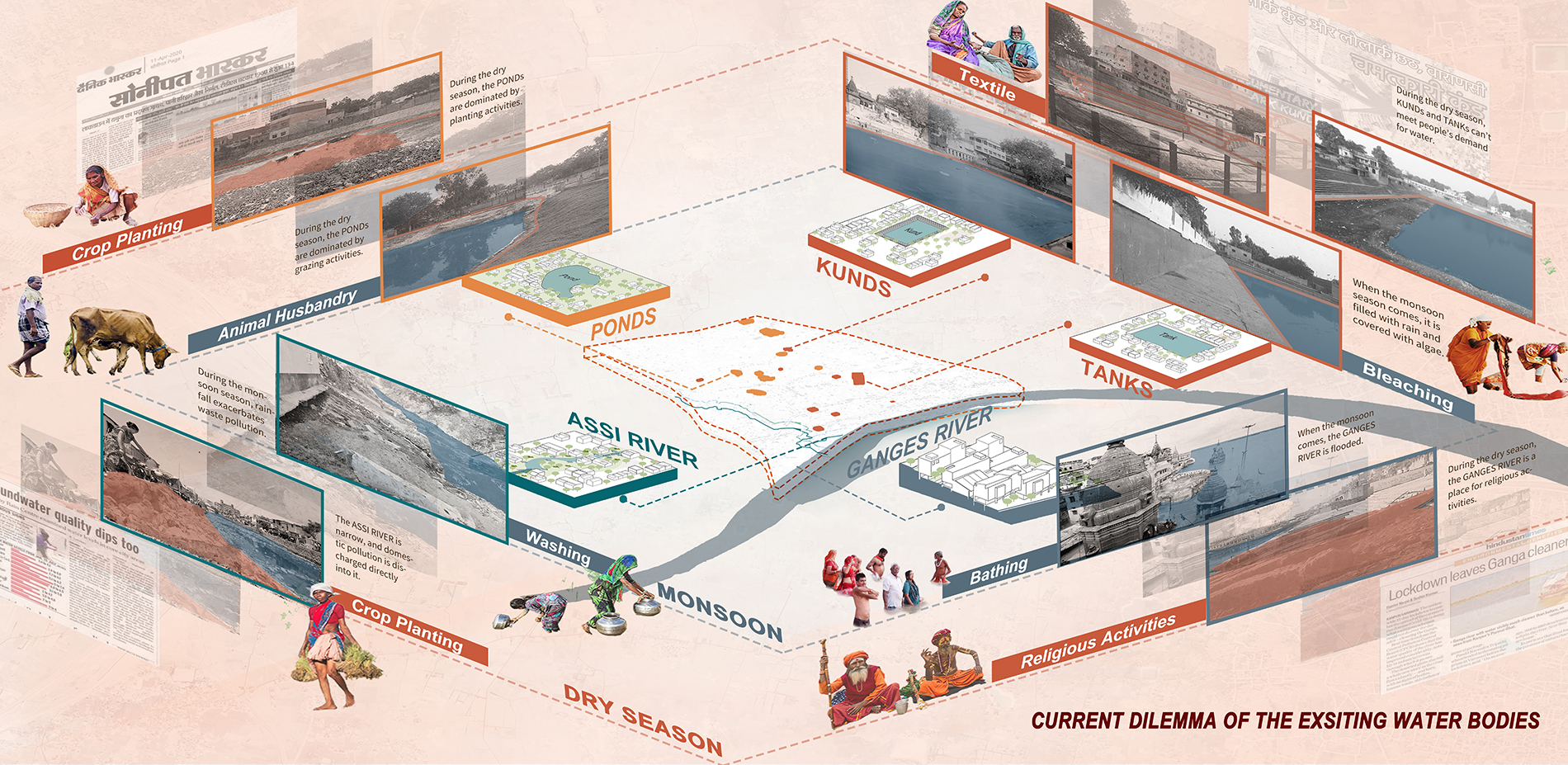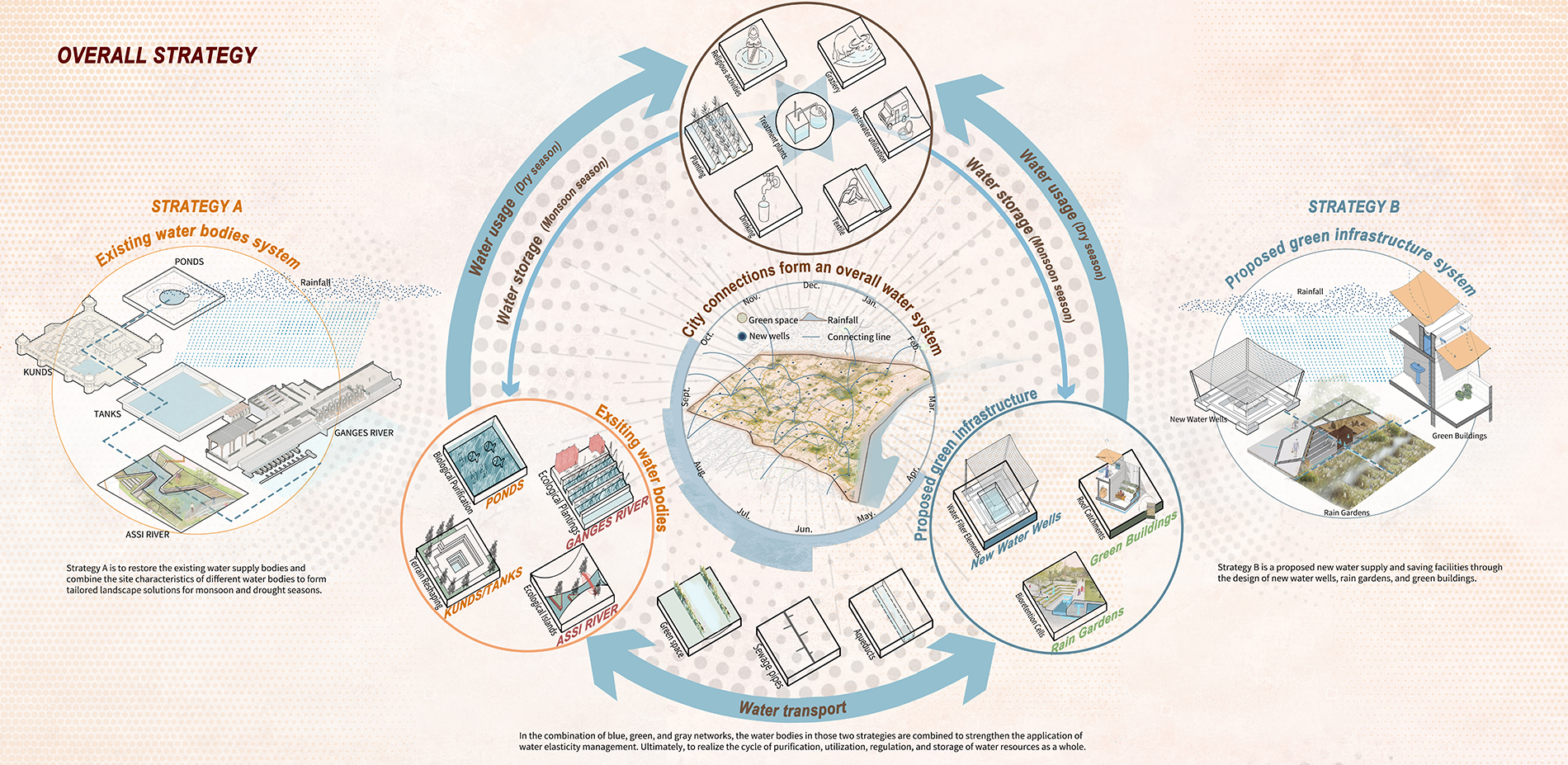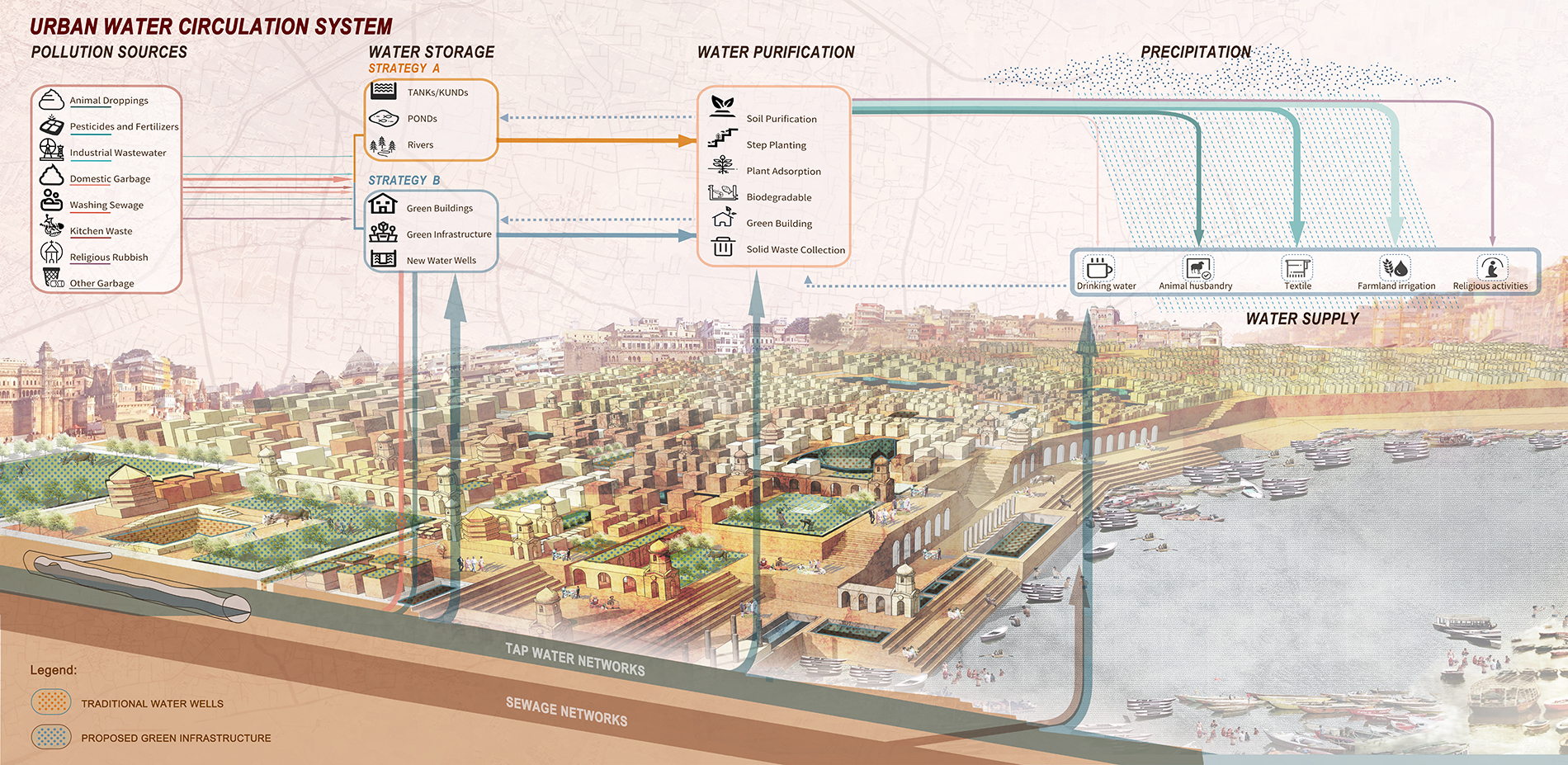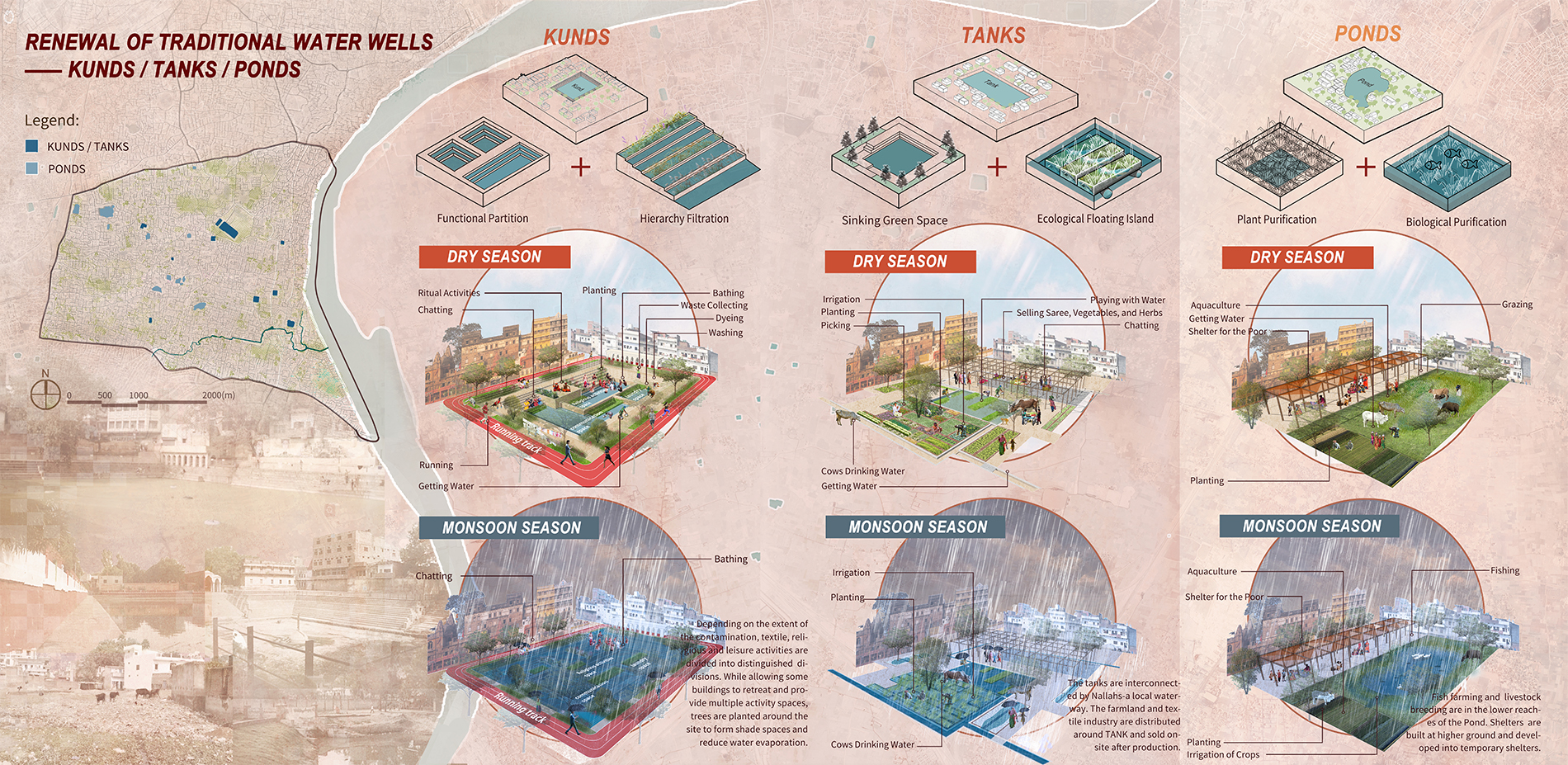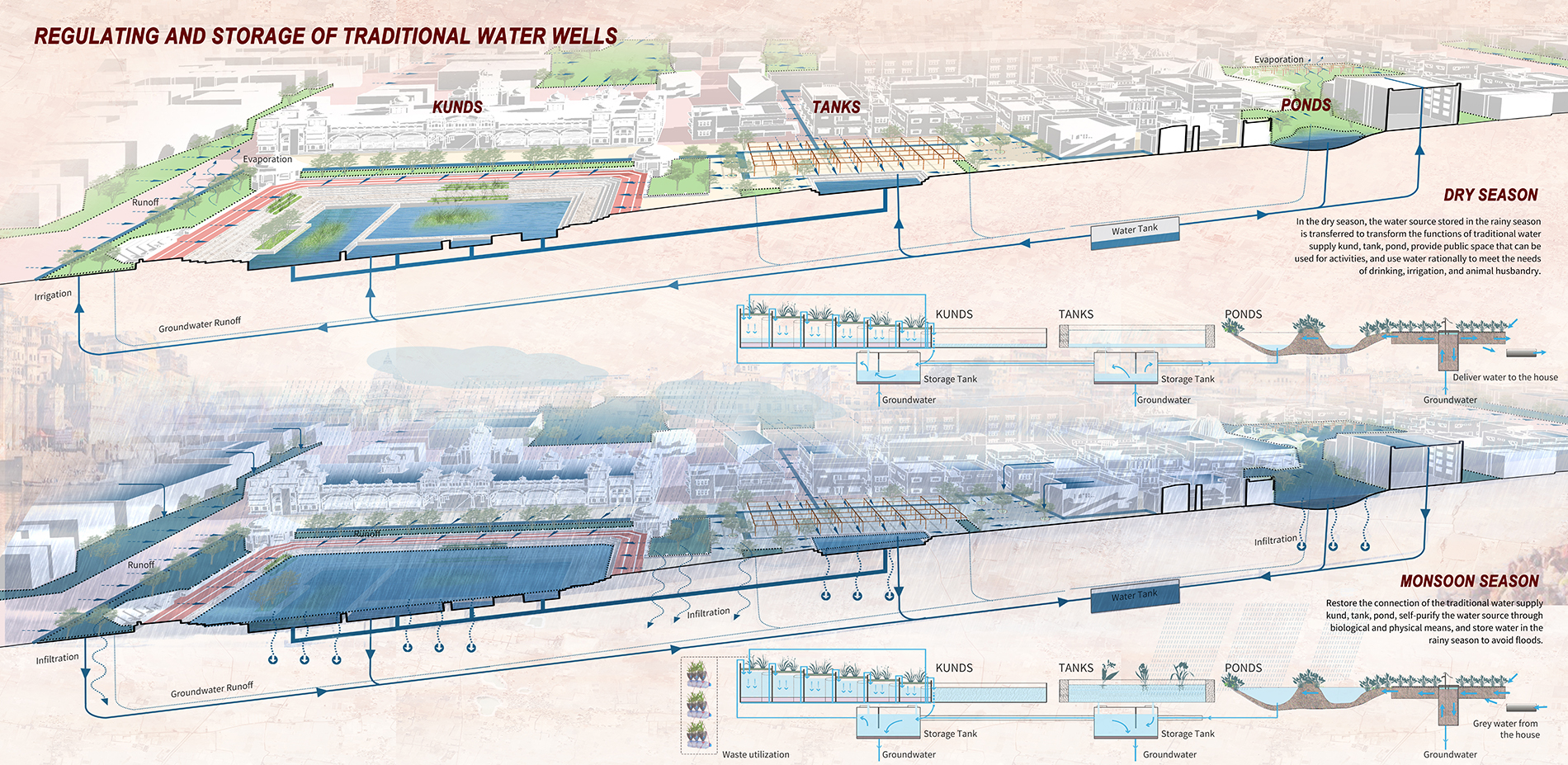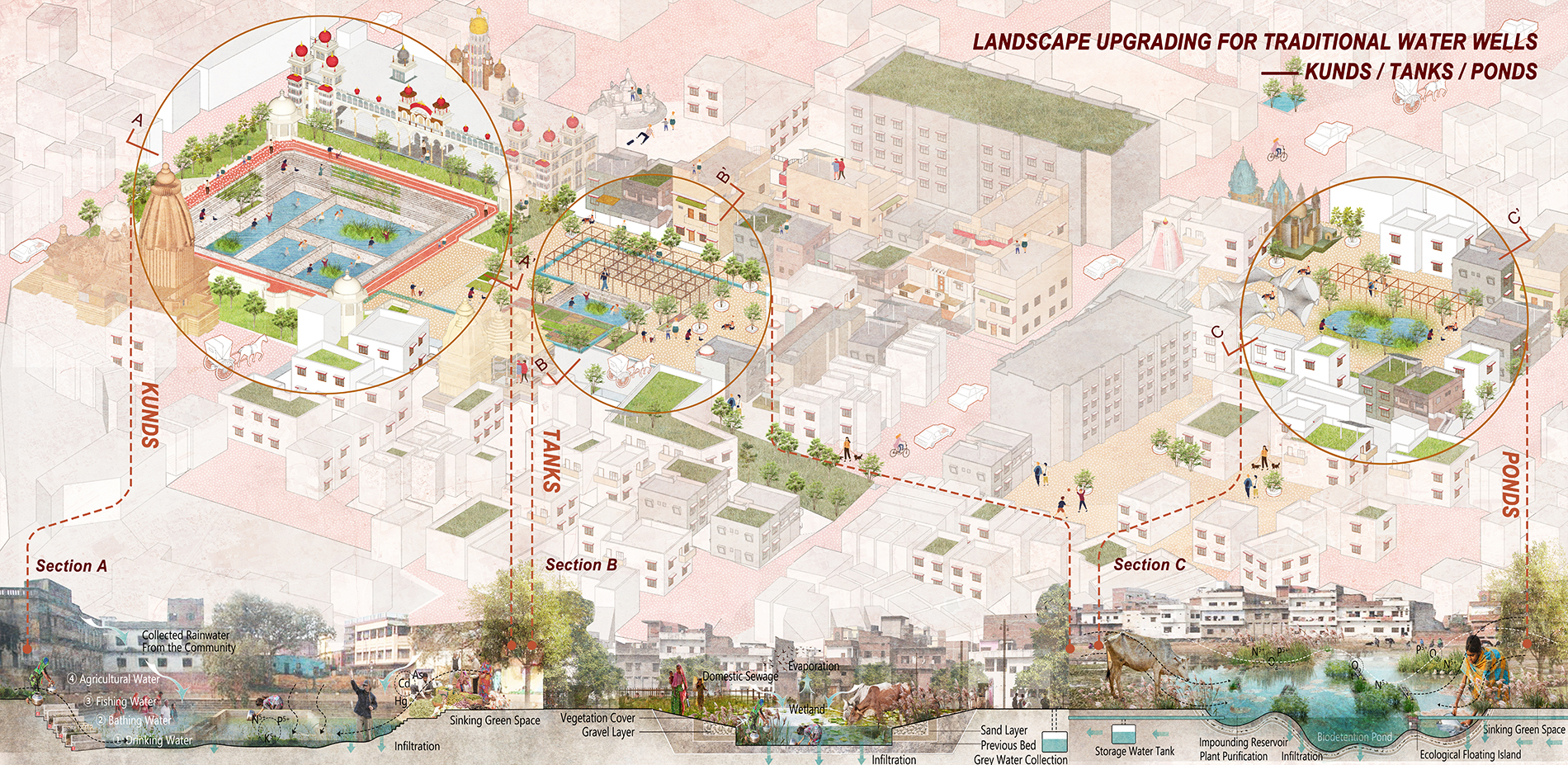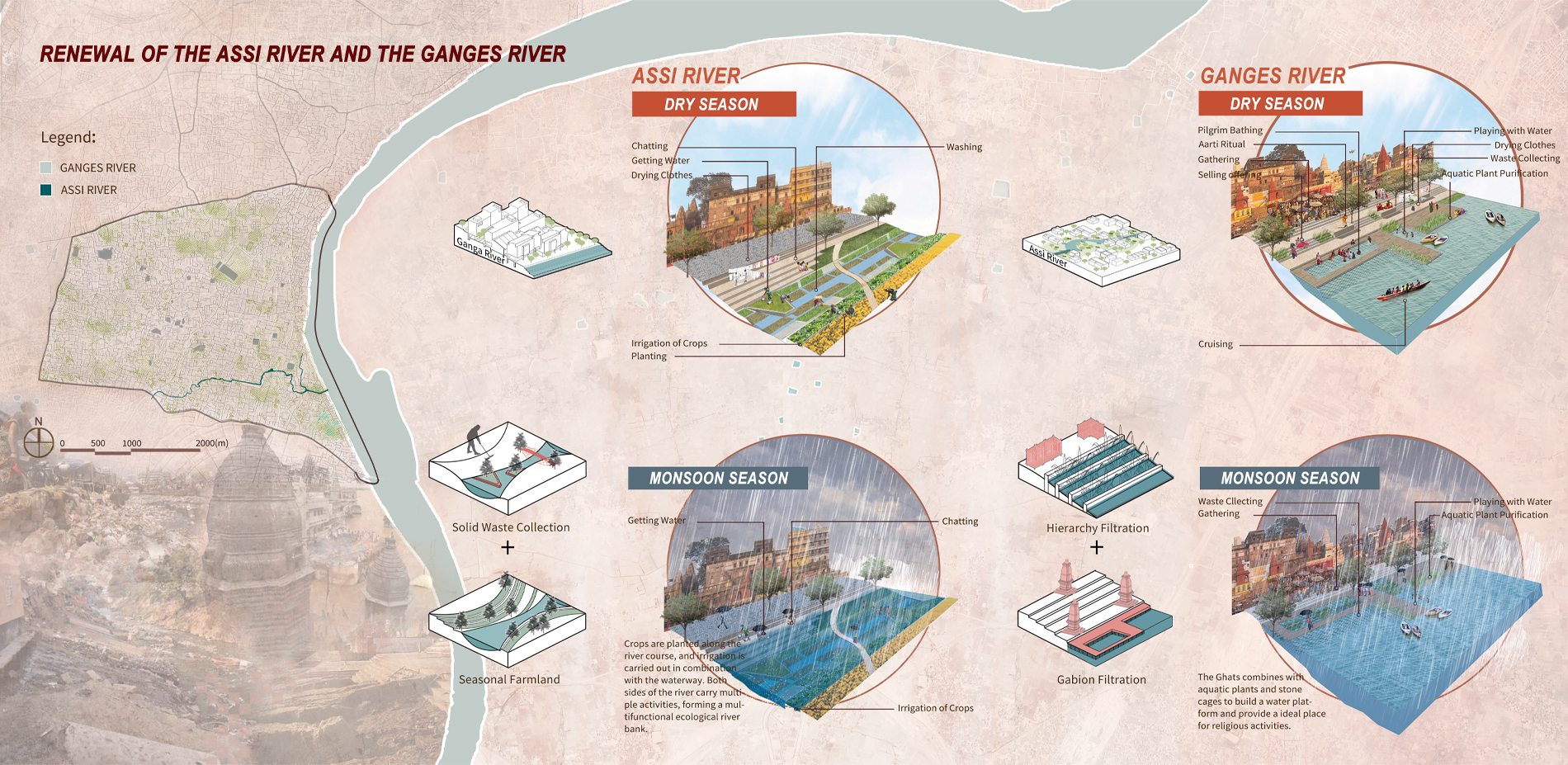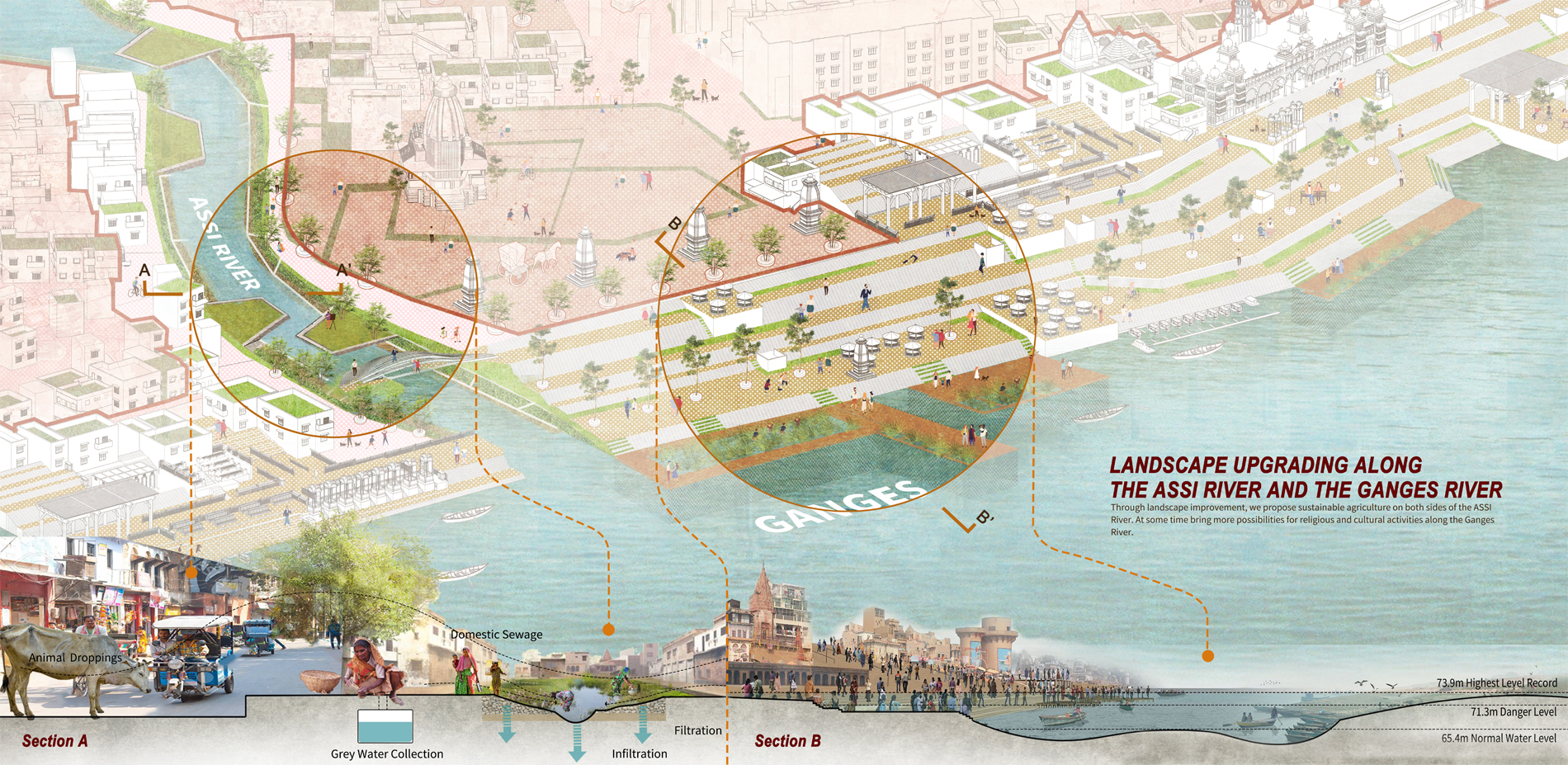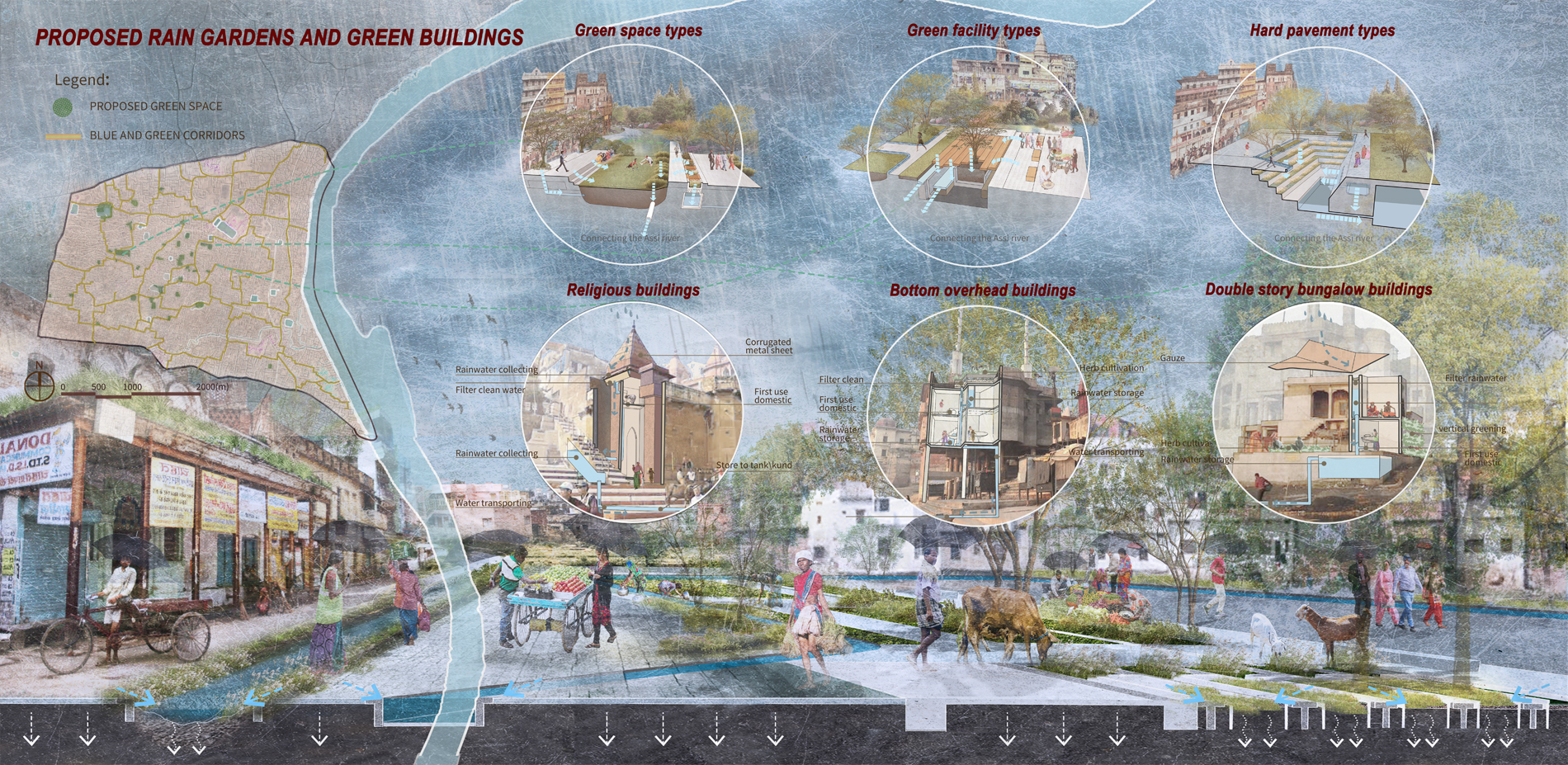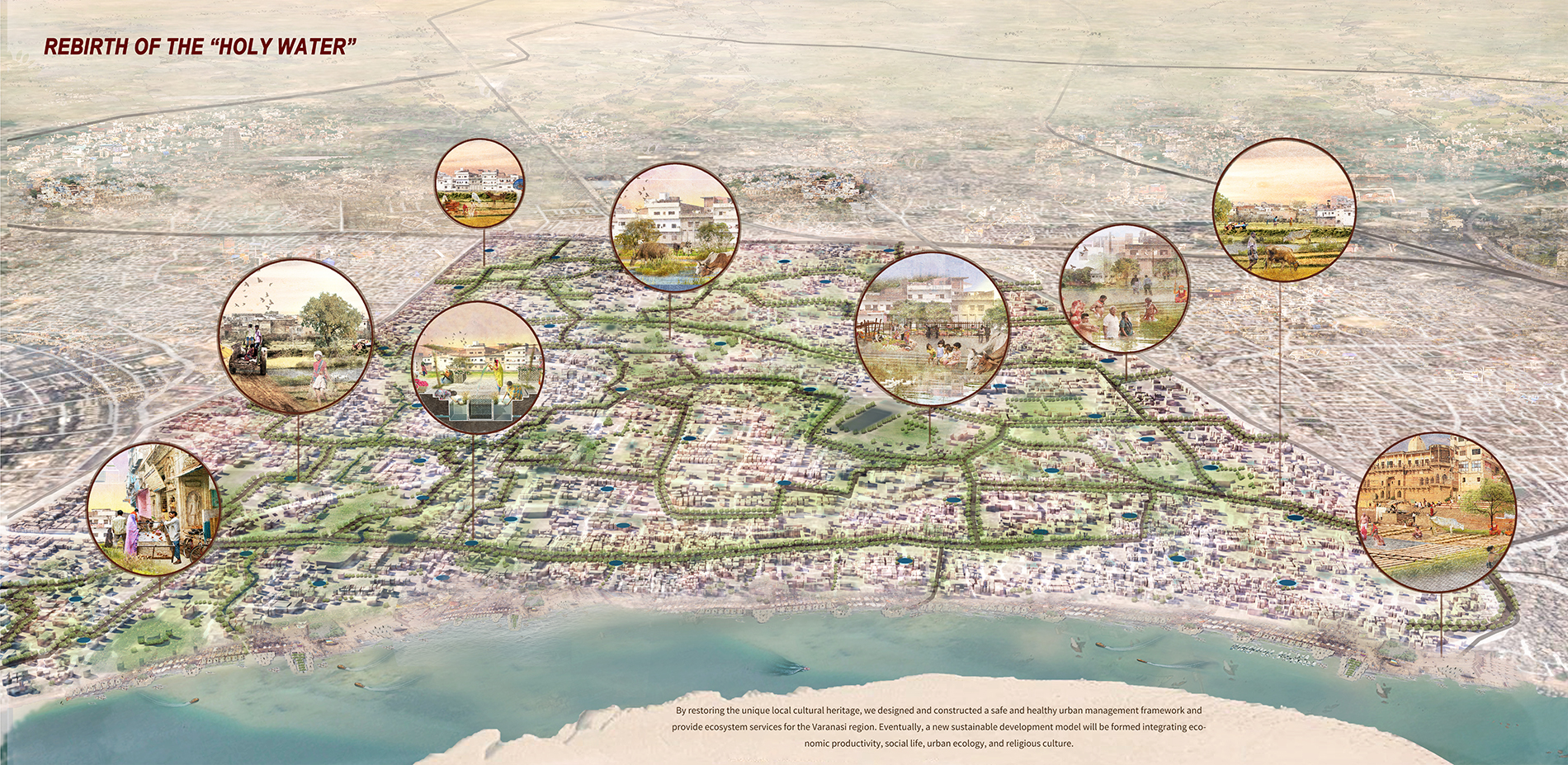Rebirth of the “Holy Water”: Landscape as a Solution to Regain Clean Water and Revitalize Urban Culture in Varanasi, India
Honor Award
Urban Design
Varanasi, India
Huaize Ye; Nannan Ge; Jing Ren; Guangliang Hu; Yue Zhou
Faculty Advisors: Jun Zhai
Soochow University
These students conducted a compelling study of the water systems in Varanasi, India, and created a sophisticated, practical proposal for an urban water management framework. The design moves they make are incredibly complex and specific to the site, yet could be replicated elsewhere with their framework. The students are not just dealing with water in usual terms like purification and potability; they are also connecting their strategy to the local culture and the interactions that the community has with water, from religion to agriculture to livestock.
- 2021 Awards Jury
Project Credits
Chenliang Ma
advisers
Xiaoyu
advisers
Yixin Zhang
advisers
Zhijie Li
advisers
Qing Wen
advisers
Project Statement
Taking urban water shortage as a point of departure, this project aims to construct an urban water management framework for Varanasi,India. We propose a flexible urban design and provides regulation, supply, culture, support, and other services. The design is divided into two strategies: one is to restore the existing water supply bodies and form different landscape functions combined with different water site characteristics; the other is to provide new water supply forms through new water intake facilities, design of new water wells, rain gardens, and green buildings. Meanwhile, by the combination of blue, green, and gray networks, the water bodies in the two strategies are combined to realize the cycle of water resources purification, utilization, and storage as a whole. We try to create economic production, social life, urban ecology, religious culture as the cycle of cultural and symbiotic new sustainable development model, achieve the vision of holy water life. So, we can revival urban unique cultural heritage, and build a safe and healthy urban water management framework for Varanasi.
Project Narrative
Project Background:
Known as the "Light of India",Varanasi is located in northern India, and was famous for its traditional Indian culture and grand public spaces. However, in the context of increasing urbanization, the excessive pressure of urban development leads to the reduction of community spaces and the gradual disappearance of traditional urban heritage, such as traditional water landscape. As the important sources of clean water in Varanasi, the Ganges, Assi river, ponds, tanks and kunds are not only part of the public domain, but they also are unique identities for the local community. However, unordered expansion of cities, coupled with poor governance and inadequate awareness of residents, leads to the reduction and degradation of these clean water resources.
Varanasi faces severe urban expansion pressure, and the degradation of traditional water management methods has intensified water pollution. It is urgent to meet the sustainability goals of "Ensure access to water and sanitation for all" proposed by SDGs and to provide an effective design strategy for the complex and diversified urban systems for Varanasi. Therefore, how to build an urban design framework of a sustainable water system, and social life and ecological rejuvenation has become the biggest challenge of this study.
Site problem:
Varanasi cities over expansion and saw a surge in building density, causing a sharp reduction in public spaces. Due to the inadequate infrastructure, the waste brought by production, life, and religious activities seriously pollutes the water bodies. Coupled with the lack of awareness of water safety, water pollution becomes a serious issue that threatens public spaces around the water bodies. Moreover, the uneven water resources allocation in the monsoon and dry season, along with the excessive exploitation of groundwater and the degradation of traditional water management methods, all of which further aggravate the imbalance between the supply and demand of urban water resources.
Strategy:
Starting from the urban water issues, this project conducts a comprehensive study between the water system and social life and explains how the water system is interrelated with the green space, economy, religion, and urban form, to propose a flexible urban form.
The project proposes an urban water management framework for Varanasi through two major design strategies. Strategy A is to restore the existing water bodies and combine the site characteristics of different water bodies to form tailored landscape solutions for the monsoon and dry season. Strategy B is a proposed new water supply and saving facilities through the design of new water wells, rain gardens and green buildings. In the combination of blue, green, and gray networks, the water bodies in those two strategies are combined to strengthen the application of water elasticity management. Ultimately, to realize the cycle of purification, utilization, regulation, and storage of water resources as a whole.
Eventually, the residents of Varanasi will benefit from a city centered on sustainable water management and will receive clean water in a healthy environment to meet the needs of drinking, religion, production, irrigation, and animal husbandry. The water circulation system of life, production, and ecology can be formed by making close contact with each other on the spatial scale of the region and city. These will allow the city to gradually return to a healthy ecosystem that can accommodate a diversity of life and human activities.
Strategy A:Existing water bodies system
① KUND/TANK/POND
① KUND and TANK, as traditional water sources, have been rapidly reduced and degraded, as well as losing the function of the original water supply and providing multifunctional public space. Pond, as a non - fixed water supply facility, the different landscape characteristics of the monsoon and dry season are also not fully utilized. To address this issue, we first clean solid waste and bottom silt. Secondly, according to the terrain characteristics, design the hierarchical purification pool and facilities for biological purification, place sandbags, and plant floating islands to filter and improve water quality. These facilities are also connected through urban waterways, storage tanks, water buildings, and facilities for storage during the monsoon season and use during the dry season.
② GANGES/ASSI RIVER
The Ganges and the Assi Rivers, as other important sources of water supply, suffer from serious water pollution. We adopt the method of stone cages and ladder planting beds to purify the river water and intercept and collect solid garbage. And then build ecological dikes and wetland floating islands to improve their ability to cope with the flood, and gradually carry out sustainable agricultural activities.
Strategy B: Proposed green infrastructure system
① NEW WELLS
The design of new water intake facilities can follow the form of traditional water Wells. We superimposed the new water intake locations according to the natural conditions of the site (precipitation deposition + green space distribution) and social conditions (public space distribution + distribution of crowd activity). The new facility can meet the water demand of a small area of people and serve as a small public space to reinvigorate the city. At the same time, it has the function of purifying water, and the filter element can be replaced after garbage accumulation and applied to planting in other areas.
② Rain gardens and green buildings
By renovating, the existing green spaces, pavement form, and water boundary, the potential green spaces are designed as a rain garden. At the same time, Combined with the architectural features of the site(includes three types: religious buildings, bottom overhead buildings, and double-storey buildings), we designed green buildings to provide the building with the function of water collection and drainage.
Vision:
With water as the medium, we combine Strategy A and B to establish an urban water circulation network and a continuous public space system. We will improve the quality and livability of urban life, and build a new Varanasi where economic production, social life, urban ecology, and religious culture coexist.
